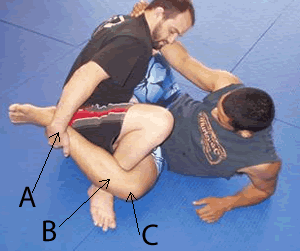Levers
In the Human Body
The human body is built around a sturdy frame called the skeleton. Muscles are attached to the skeleton and generate movement. Many levers exist within the skeletal structure.
Nature has designed the human body for movement rather than maximising force. When dealing with levers it is easy to keep in mind a few points.
1) A first order lever has the fulcrum between the load and the effort.
2) A second order lever has the load between the fulcrum and the effort
3) A third order lever has the effort between he fulcrum and the load.
4) If the effort is further from the fulcrum than the load then the lever is a force multiplier.
5) If the effort is closer to the lever than the load then the lever is a speed multiplier.
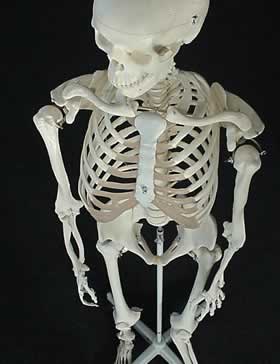
The forearm is a classic example of nature's way of maximising motion rather than force. The biceps is a muscle that flexes the arm. Tendons attach this muscle close to the elbow.
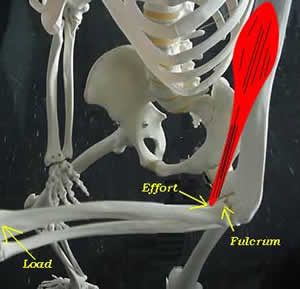
Now,
the forearm is an example of a third order lever.
Identify the fulcrum, load and effort.
The effort is where the muscle is attached. You can flex your biceps and
find where they attach on your forearm.
What type of lever is the forearm?
Is it designed to maximise distance or force?.
In nature why is it more important to multiply the distance rather than the force?.
Redesign this lever to be a force multiplier.
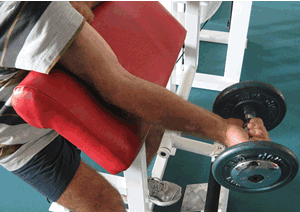
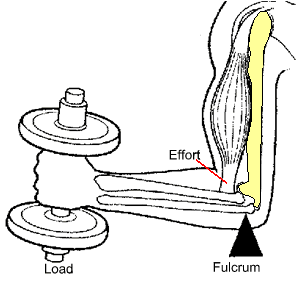
The thigh muscles (quadriceps) are attached to the shin bone (tibia) just below the knee joint. Look at the athlete on the right as he performs the leg extension exercise.
Identify the fulcrum, load and effort of this particular lever system.
What type of lever is this?
The muscle generates
movement by shortening and pulling on a bone. Compare the amount the muscle
shortens with the amount of movement generated in the lower leg.
Is this lever system designed for force or speed multiplication?
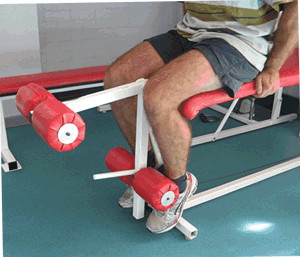
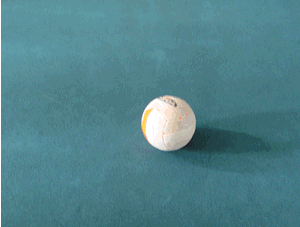
The kicking action is animated on the right.
What muscles are involved to start the femur moving? Where are these muscles attached?
Identify all the levers involved.
What type of lever is each?
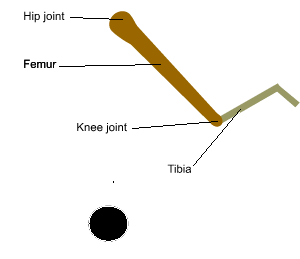
The forearm is controlled by two opposing set of muscles. The movement of the forearm is shown on the right.
What type of lever is formed when the biceps contract?
What type of lever is formed when the triceps contract?
Why are both sets of muscles attached so close to the elbow (fulcrum)?
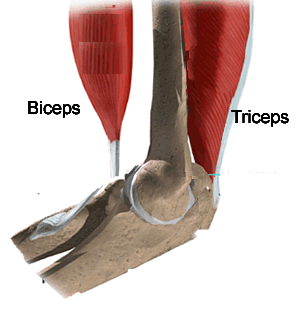
Not all levers in the body are third order levers designed for speed. The image on the right shows the lever formed when we stand on our toes or jump for a mark.
The Achille's tendon connects the calf muscle to the heel while the mass of the body passes down the tibia to the instep.
This is an example of a designed to maximise . Explain why you made these choices.
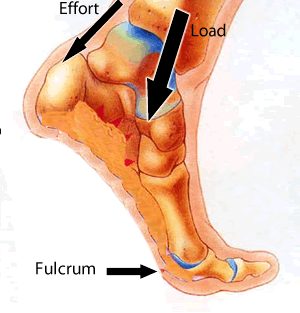
Wrestling is all about leverage. Using levers to multiply force or speed. Consider the image on the right. This particular maneuver is aimed at damaging the knee.
What type of lever is formed?
Which statement is true?
This type of lever is a
